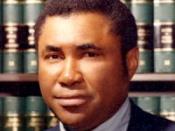The discrimination process and civil litigation processes are designed to protect not only the employee but the employer from unwanted and unacceptable behaviors. This paper will explain the discrimination complaint and civil litigation process.
This paper begins with an employee wishing to file a compliant against his employer for discrimination. Discrimination is defined as the act of "prejudicial outlook, action or treatment" (MW [MW], 2006). A discrimination complaint can stem from many different types of discrimination. Research shows there are three key Acts pertaining to discrimination. The first pertains to Title VII, which simply stated is the Civil Rights Act of 1964. This Act makes discrimination based on an individual's race, color of his or her skin, religion he or she practices, sexual orientation and an individuals national origin illegal. (EEOC [EEOC], 2004). The second type pertains to the American with Disability Act. This Act says an individual with a disability using as an example a person who has physical or mental impairment which limits activities he or she are involved in, he or she has a record of such impairment, or he or she may merely be regarded as having such an impairment.
The Act further defines an individual who can with or without "reasonable accommodation" (EEOC) perform the essential function of the job for which he or she is applying for then must be considered on all aspects of his or her competencies. Reasonable accommodations pertain to the employer providing, within reason, the necessary tools for the employee to do his or her job. Reasonable accommodations might look like job restructuring, modifying existing building facilities to grant access to all, or modifying or obtaining equipment to enable the employee to do his or her job. This Act makes discrimination solely because of an individual's disability either during...


